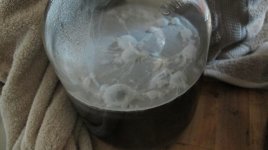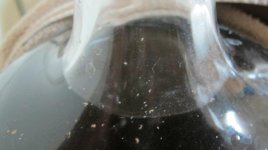Robert D Glowacki
Apprentice
- Joined
- Sep 2, 2014
- Messages
- 9
- Reaction score
- 0
I've been brewing about 2 years now and have brewed approximately 25 batches (5 gal) and all have at least turned out drinkable, some actually good. The last 3 batches of beer I brewed I used several new and different procedures and had to dump 2 of the 3:
1) Started to use a Yeast Starter, before I used just dry yeast sprinkled on top of my wort
2) Ariated my wort using a air pump and a dispensing stone through a filter (20 min) before I used a drill motor and paddle
3) used a fast fermenter instead of the bucket and glass
4) Changed were I bought my supplies
The first batch came out OK, not great but drinkable, The last 2 batches I had to dump. That was a Christmas Ale and a Smokey Porter. Both recipes were repeat and the first time came out good. Everything that touched the wort after boiling was cleaned and sanitized. The beer after sitting 2 weeks in fermenter and 4 weeks in bottles had a strong medicine flavor. I'm writing this and asking if anybody else had similar results with the fastfermenter or is it something else that went wrong. Any suggestions would be appreciated.
My next batch will be done the old way and I'll change only 1 procedure at a time until I can identify where the problem originated.
1) Started to use a Yeast Starter, before I used just dry yeast sprinkled on top of my wort
2) Ariated my wort using a air pump and a dispensing stone through a filter (20 min) before I used a drill motor and paddle
3) used a fast fermenter instead of the bucket and glass
4) Changed were I bought my supplies
The first batch came out OK, not great but drinkable, The last 2 batches I had to dump. That was a Christmas Ale and a Smokey Porter. Both recipes were repeat and the first time came out good. Everything that touched the wort after boiling was cleaned and sanitized. The beer after sitting 2 weeks in fermenter and 4 weeks in bottles had a strong medicine flavor. I'm writing this and asking if anybody else had similar results with the fastfermenter or is it something else that went wrong. Any suggestions would be appreciated.
My next batch will be done the old way and I'll change only 1 procedure at a time until I can identify where the problem originated.


